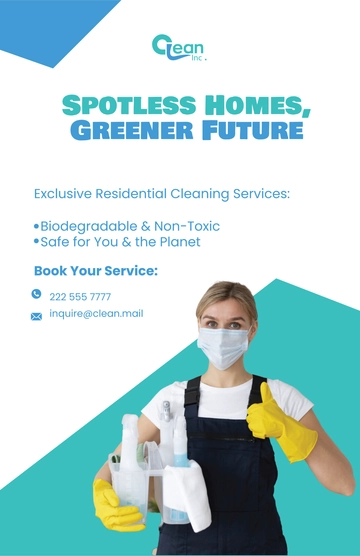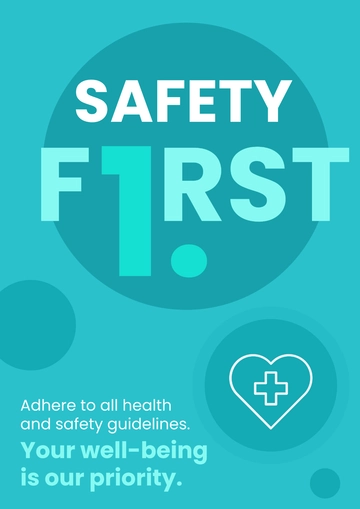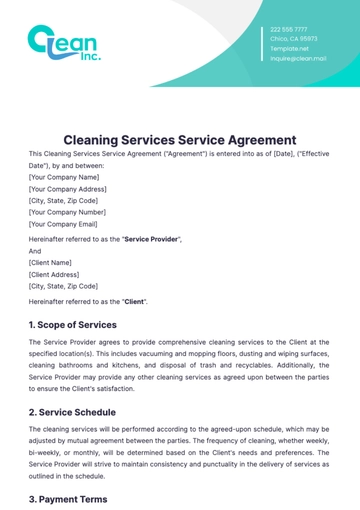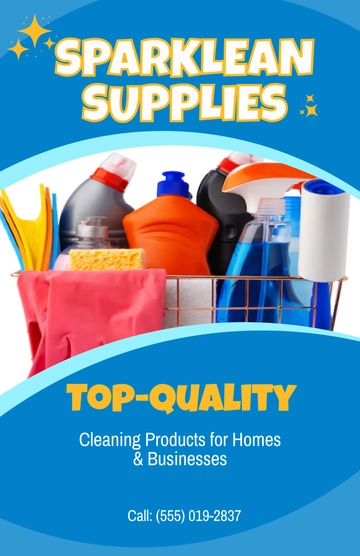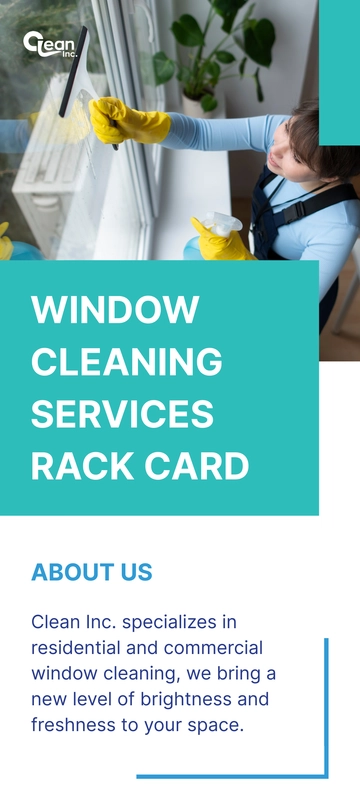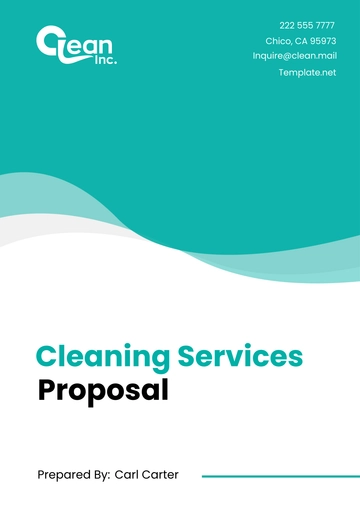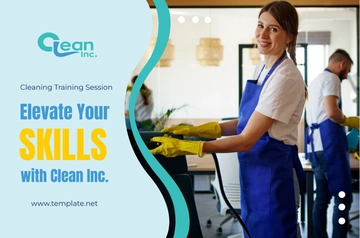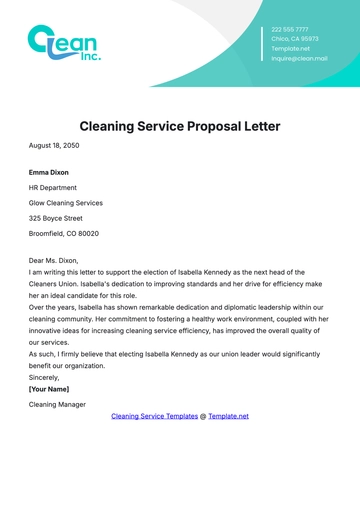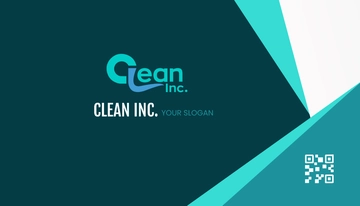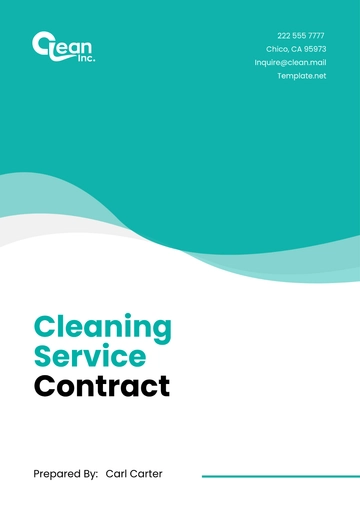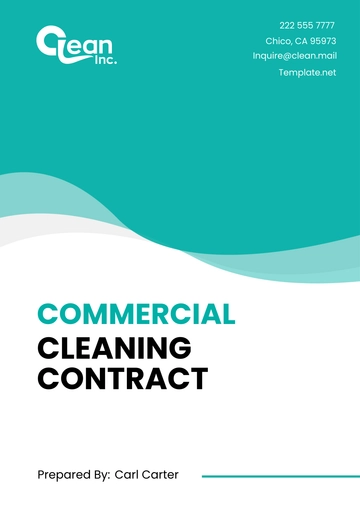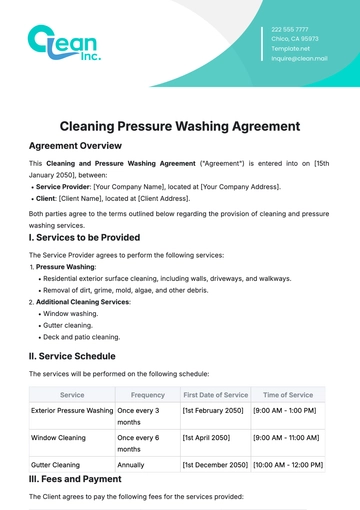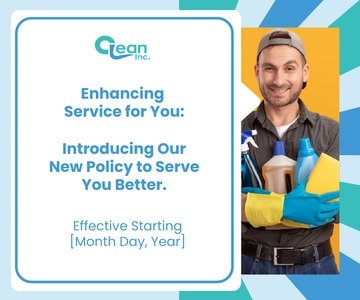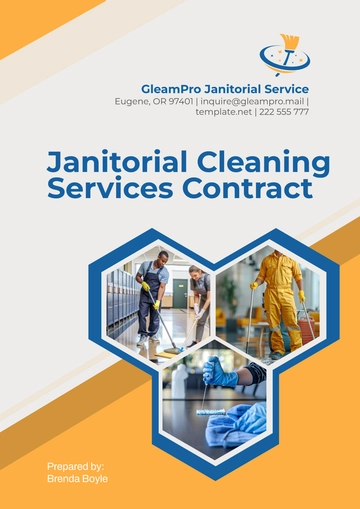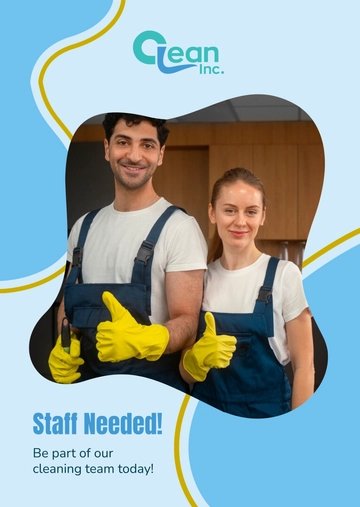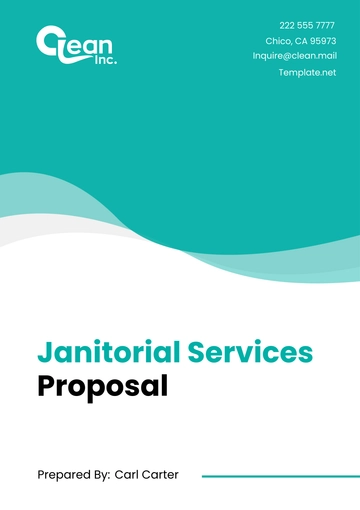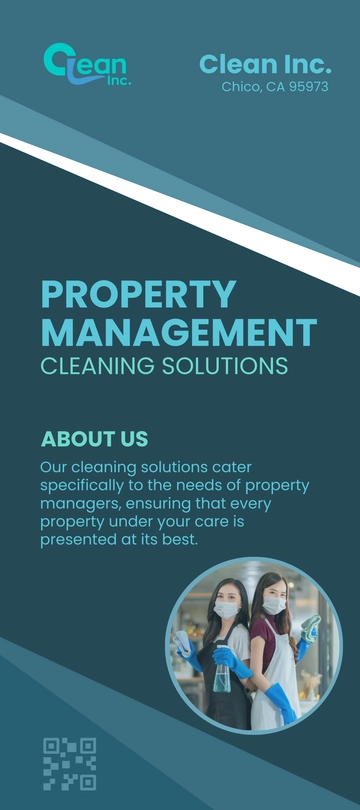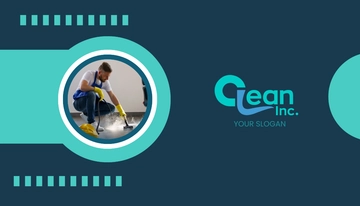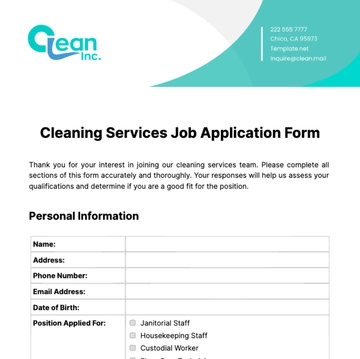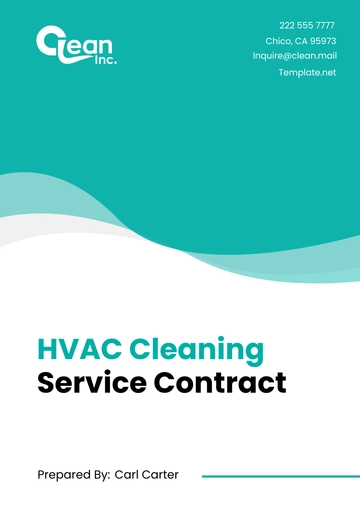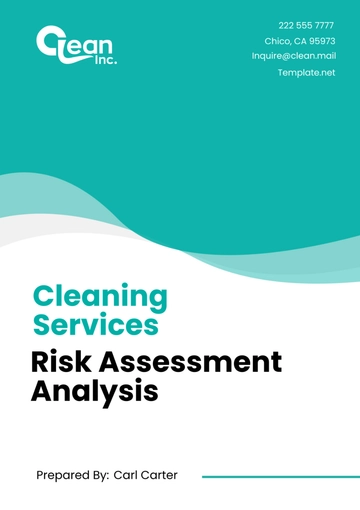Free Cleaning Services Workplace Wellness User Guide
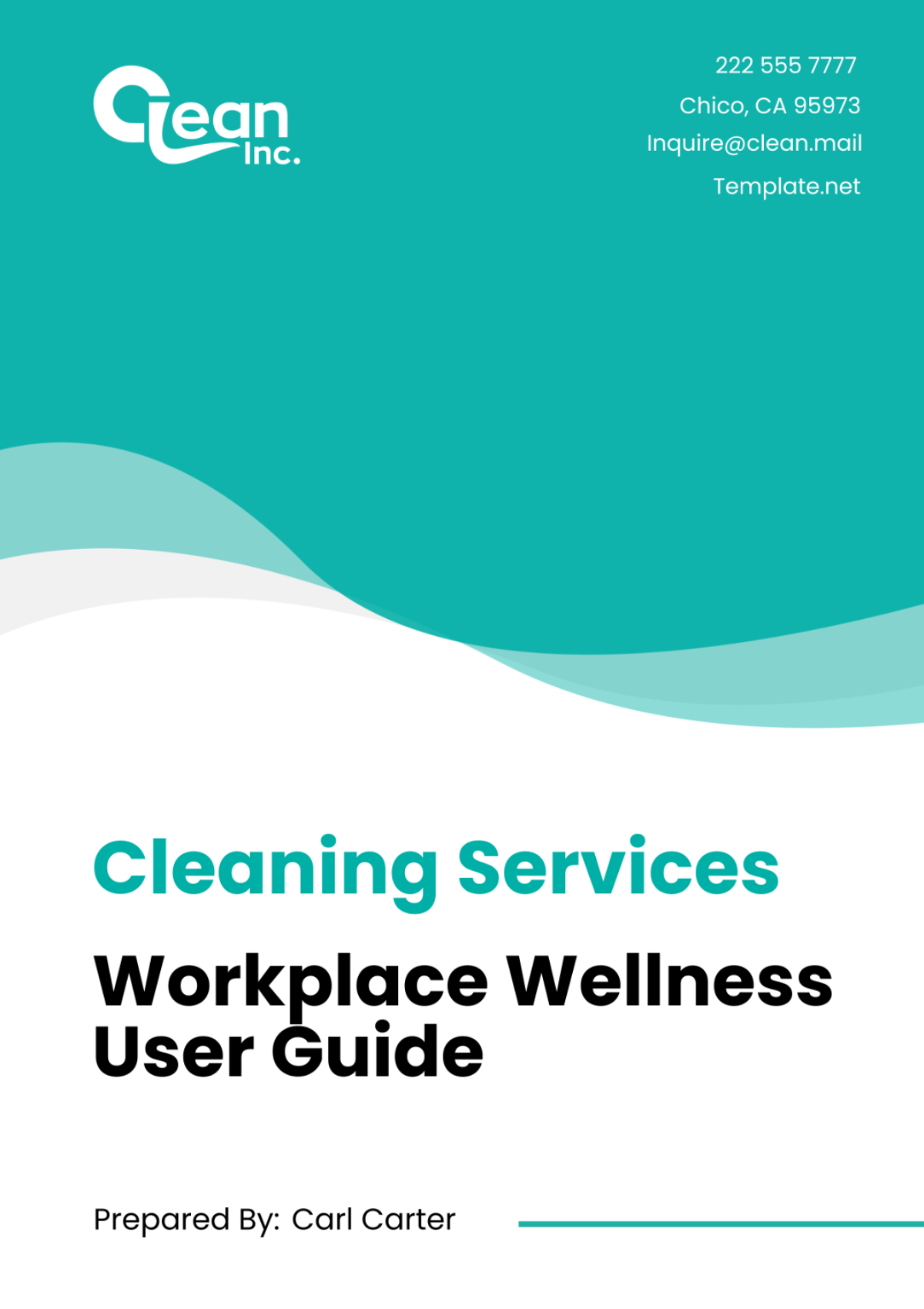
I. Introduction
Welcome to the [Your Company Name] Workplace Wellness User Guide. This comprehensive guide is tailored to empower employees with the knowledge and practices necessary to foster a clean and healthy work environment.
A. Purpose
The primary objective of this guide is to instill a sense of responsibility and awareness among employees regarding the importance of workplace cleanliness and hygiene. By adhering to the guidelines outlined herein, individuals contribute not only to their own well-being but also to the collective health of the organization.
B. Scope
This guide encompasses a wide array of topics related to workplace wellness, ranging from routine cleaning procedures to personal hygiene practices and emergency protocols. It serves as a comprehensive resource for employees at all levels, ensuring that everyone has access to the information needed to maintain a safe and sanitary workspace.
II. Importance of Workplace Wellness
A clean and healthy work environment is essential for fostering employee well-being, productivity, and overall organizational success.
A. Benefits of a Clean Workplace
A well-maintained workspace offers a multitude of advantages, including:
Benefits | Description |
|---|---|
Improved Employee Health and Well-being | Clean environments reduce the risk of illness and promote physical and mental well-being among employees. |
Increased Productivity and Morale | A tidy and organized workspace enhances employee morale, leading to higher levels of engagement and productivity. |
Reduced Absenteeism and Sick Days | By minimizing the spread of germs and contaminants, clean workplaces help decrease absenteeism and the associated productivity losses. |
B. Role of Cleaning Services
The cleaning services team plays a pivotal role in upholding workplace wellness by:
Ensuring Cleanliness: They are responsible for maintaining cleanliness and hygiene in all areas of the workplace, including offices, restrooms, and communal spaces.
Preventing Illness: Through regular disinfection and sanitation efforts, cleaning services help mitigate the risk of illness transmission among employees.
Promoting Awareness: By collaborating with employees and management, cleaning services raise awareness about the importance of cleanliness and encourage proactive measures to maintain a healthy environment.
III. Cleaning Procedures
Maintaining a clean and sanitary work environment requires diligent adherence to established cleaning procedures. The following tasks should be performed regularly to ensure optimal cleanliness:
A. Daily Cleaning Tasks
Task | Description |
|---|---|
Wipe Down Surfaces | Use disinfectant wipes to clean desks, tables, countertops, and other frequently touched surfaces to eliminate germs and prevent the spread of illness. |
Vacuum or Mop Floors | Remove dust, dirt, and debris from floors by vacuuming carpets or mopping hard surfaces, such as tile or hardwood, to maintain a clean and safe walking environment. |
Empty Trash Bins | Regularly empty trash bins and replace liners to prevent odors and bacterial growth, promoting a tidy and hygienic workspace. |
B. Weekly Cleaning Tasks
Task | Description |
|---|---|
Dust Surfaces | Dust shelves, cabinets, and other surfaces using microfiber cloths or dusters to remove accumulated dust and allergens, improving indoor air quality. |
Clean Windows and Glass Surfaces | Use glass cleaner and lint-free cloths to clean windows, glass partitions, and mirrors, ensuring streak-free surfaces and enhancing overall aesthetics. |
Sanitize High-Touch Areas | Disinfect frequently touched surfaces like door handles, light switches, and elevator buttons using disinfectant sprays or wipes to minimize the risk of germ transmission. |
C. Monthly Cleaning Tasks
Task | Description |
|---|---|
Deep Clean Carpets and Upholstery | Perform deep cleaning of carpets and upholstery using carpet cleaners or steam cleaners to remove embedded dirt, stains, and allergens, extending the lifespan of these surfaces. |
Wash Curtains and Blinds | Remove dust and dirt from curtains and blinds by laundering them or using a vacuum cleaner with an upholstery attachment, maintaining a clean and allergen-free environment. |
Clean Refrigerators and Microwaves | Thoroughly clean refrigerators and microwaves in common areas with soap and water to remove spills, food residue, and bacteria, preventing cross-contamination and foodborne illnesses. |
IV. Hygiene Practices
Promoting good hygiene practices among employees is essential for maintaining a healthy work environment. The following guidelines should be followed to uphold proper hygiene standards:
A. Personal Hygiene
Hand Hygiene: Wash hands frequently with soap and water for at least 20 seconds, especially after using the restroom, before eating, and after coughing or sneezing.
Hand Sanitization: Use alcohol-based hand sanitizers containing at least 60% alcohol when soap and water are not readily available, effectively killing germs and reducing the risk of illness transmission.
Respiratory Etiquette: Cover your mouth and nose with a tissue or your elbow when coughing or sneezing to prevent the spread of respiratory droplets containing germs.
B. Workspace Hygiene
Clean Workspaces: Keep personal workspaces clean and clutter-free to minimize the accumulation of dust and allergens, promoting a healthier indoor environment.
Food Safety: Avoid eating at desks to prevent food contamination and spills, and store food items properly in designated areas such as refrigerators or cabinets to maintain freshness and prevent pest infestations.
Shared Equipment: Regularly clean and disinfect shared equipment such as phones, keyboards, and printers to reduce the risk of germ transmission among employees.
V. Health and Safety Measures
Ensuring the health and safety of employees is paramount in any workplace. Implementing proper protocols and procedures can help mitigate risks and address emergencies effectively.
A. Illness Reporting
Employees are required to follow the established protocol for reporting illnesses in the workplace.
Informing Supervisors: Employees should promptly inform their supervisors if they are feeling unwell or experiencing symptoms of illness, such as fever, cough, or sore throat. This allows for timely assessment and implementation of appropriate measures to prevent the spread of illness to coworkers.
Sick Leave Policies: Adhere to company policies regarding sick leave and remote work options. Employees who are unwell should stay home to recover and avoid spreading illness to others. Remote work options may be available to ensure continuity of work while minimizing the risk of contagion in the workplace.
B. Emergency Procedures
Employees must be familiar with emergency procedures to ensure a safe response to various emergency situations.
Emergency Exits and Evacuation Routes: Familiarize yourself with the location of emergency exits and evacuation routes in the workplace. In the event of a fire or other emergency requiring evacuation, follow the designated routes to exit the building safely.
Fire Extinguishers and First Aid Kits: Know the location of fire extinguishers and first aid kits throughout the workplace. In case of a fire, follow proper procedures for using fire extinguishers to suppress small fires safely. Additionally, first aid kits should be readily accessible and equipped with essential supplies for administering first aid in medical emergencies.
VI. Wellness Resources
Promoting employee wellness goes beyond physical cleanliness. Providing access to resources and support services can enhance overall well-being and contribute to a positive work environment.
A. Employee Assistance Program (EAP)
Employees can utilize the Employee Assistance Program (EAP) for confidential counseling and support services.
Confidential Counseling Services: The EAP offers confidential counseling services to employees facing personal or work-related challenges. Trained counselors provide support and guidance to help employees navigate difficult situations and develop coping strategies.
Referral to Healthcare Professionals: In cases where specialized treatment or intervention is necessary, the EAP can provide referrals to healthcare professionals, including psychologists, therapists, or medical specialists. This ensures that employees receive the appropriate level of care for their specific needs.
B. Wellness Workshops and Seminars
Employees are encouraged to participate in wellness workshops and seminars to enhance overall well-being.
Educational Sessions: Wellness workshops and seminars cover a range of topics, including stress management, nutrition, mindfulness, and work-life balance. These sessions provide valuable information and practical strategies for improving physical and mental health, as well as enhancing resilience in the face of challenges.
Group Activities: Group activities, such as yoga classes, team-building exercises, or wellness challenges, foster camaraderie among employees and promote a sense of community. Engaging in physical activities together can reduce stress levels, improve mood, and enhance overall morale in the workplace.
VII. Feedback and Suggestions
Open channels of communication for employees to provide feedback and suggestions are essential for continuous improvement in workplace wellness initiatives.
A. Reporting Issues
Employees should know how to report cleanliness or maintenance issues in the workplace.
Contacting [Your Company Name]: Employees can report cleanliness or maintenance issues by contacting the designated department or individual responsible for facility management. This may include issues such as spills, broken equipment, or areas in need of cleaning.
Providing Feedback: Employees are encouraged to provide feedback on cleanliness and hygiene standards to help identify areas for improvement and ensure that standards are consistently met.
B. Suggestions for Improvement
Employees are invited to share ideas and suggestions for enhancing workplace wellness initiatives.
Sharing Ideas: Employees can share ideas for improving workplace wellness initiatives through suggestion boxes, online feedback forms, or directly with management. Suggestions may include new cleaning practices, wellness programs, or initiatives to promote a healthier work environment.
Participating in Surveys: Periodic surveys or focus groups may be conducted to gather feedback from employees on workplace wellness initiatives. Participation in these surveys allows employees to voice their opinions and preferences, contributing to the development of tailored wellness programs.
VIII. Conclusion
Maintaining a clean and healthy work environment is a shared responsibility that requires collaboration and commitment from everyone in the organization.
A. Commitment to Workplace Wellness
We appreciate your commitment to workplace wellness and cleanliness. By following the guidelines outlined in this user guide, you play a vital role in creating a safe and healthy environment for yourself and your colleagues.
B. Contact Information
[Your Company Email] | |
Phone | [Your Company Phone Number] |
Website | [Your Company Website] |
Social Media | [Your Company Social Media] |
Connect with us for updates on workplace wellness tips and resources.
Thank you for your dedication to maintaining a healthy workplace. For further assistance or inquiries, please contact [Your Company Name] using the provided contact information.
- 100% Customizable, free editor
- Access 1 Million+ Templates, photo’s & graphics
- Download or share as a template
- Click and replace photos, graphics, text, backgrounds
- Resize, crop, AI write & more
- Access advanced editor
Introducing the Cleaning Services Workplace Wellness User Guide Template from Template.net. This editable and customizable guide empowers cleaning service providers to promote employee well-being in the workplace. Covering topics like ergonomics, stress management, and healthy habits, it fosters a positive work environment. Editable in our Ai Editor Tool, tailor the guide to suit your cleaning team's needs. Elevate workplace wellness with this comprehensive template.
You may also like
- Cleaning
- Cleaning Brochure
- Cleaning Checklist Service
- Cleaning Estimate
- Cleaning Flyer
- Cleaning Invoice
- Cleaning Proposal
- Cleaning Quotation
- Cleaning Services Receipt
- Cleaning Services Roster
- Cleaning Schedule
- Cleaning Services Survey
- Cleaning Services Card
- Cleaning Services Banner
- Cleaning Services Form
- Cleaning Contract
- Cleaning Business Card
- Cleaning Services Agreement
- Cleaning Services Poster
- Cleaning Services Plan
- Cleaning Services Letterhead
- Window Cleaning
- Cleaning-Services Logo
